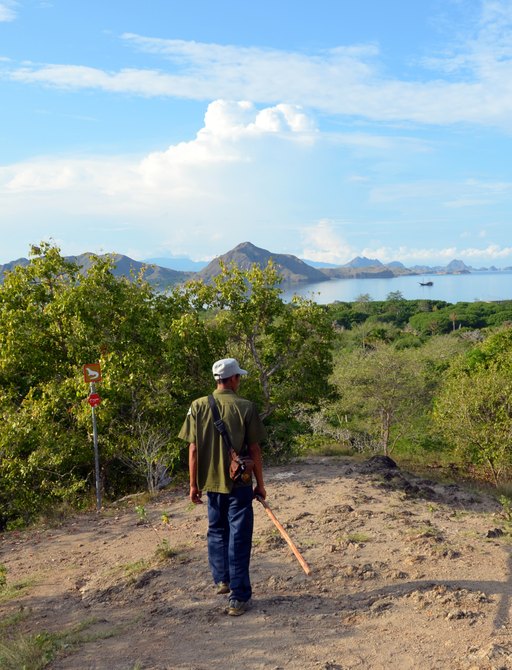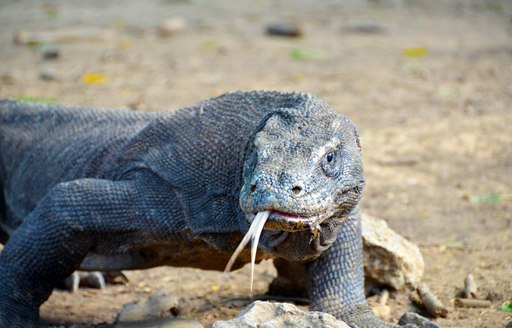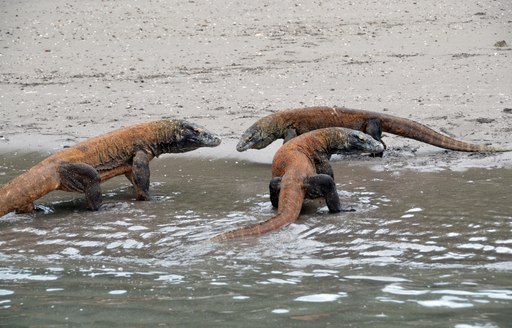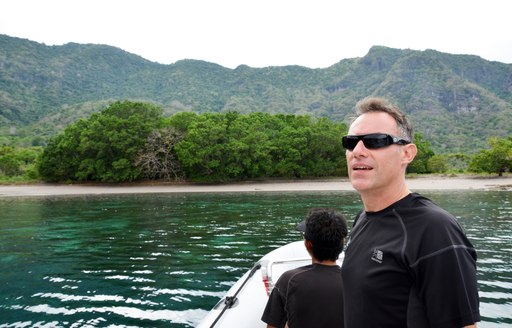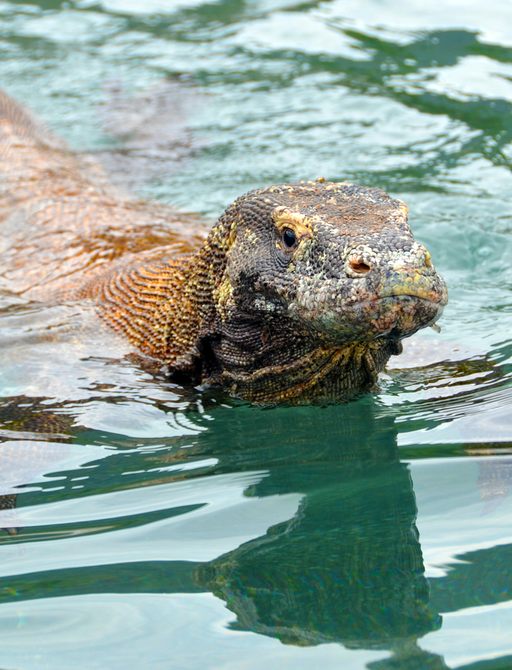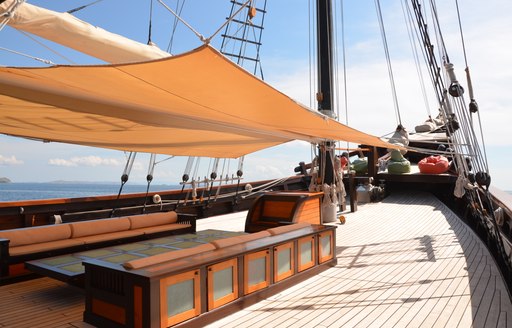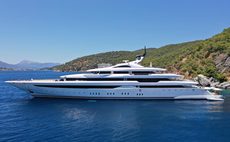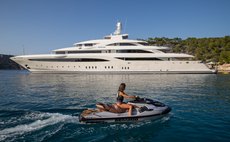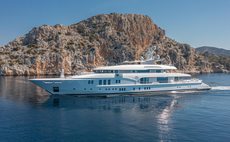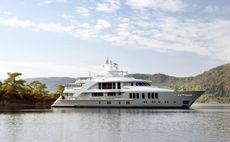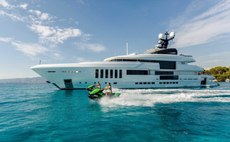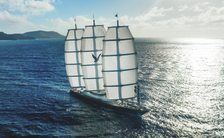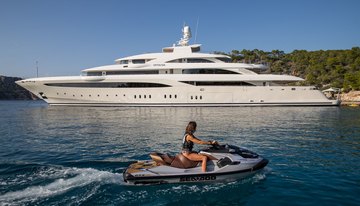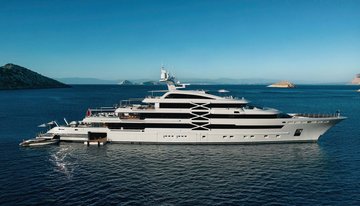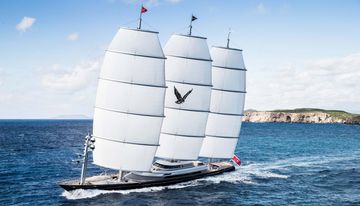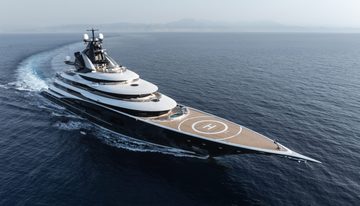Reaching up to three metres in length complete with scaly skin, sturdy bowed legs, a huge tail and a yellow forked tongue, it’s easy to see how the giant reptile got its draconian name and, as we discovered on a recent luxury yacht charter visit to Komodo, they are certainly a spectacular sight to behold in the wild.
Komodo dragons inhabit only five islands in southeastern Indonesia, four of which – Komodo, Rinca, Gili Montang and Gili Dasami - lie within the Komodo National Park set up in 1980 to conserve the unique creatures, while they were discovered in 2014 to also live on the nearby island of Flores.
All part of the Lesser Sunda chain, the islands feature a rugged and hilly terrain covered with both forest and savanna grassland. Temperatures reach a hot and sticky 35 degrees during the dry season and it is in these harsh conditions that the dragons have thrived for millions of years, and ultimately become a Komodo yacht charter must-see.
There are two ranger stations in the national park that act as gateways to these majestic dragons, both of which can be easily accessed from your Komodo Islands crewed charter yacht via tender. The first is at Loh Liang, located on the east coast of Komodo, and the second is at Loh Buaya on Rinca’s north east coast.
At both sites, visitors can opt to undertake one of three walking trails all varying in distance. It is crucial that visitors are accompanied by a park ranger, who will act as guide through the forest where the komodos as well as other wild animals can be spotted.
For a closer, more in-depth look at the land inhabited by the dragons and creatures such as Timor deer and the orange footed scrub fowl - an endemic rat - take a look at the interactive street view of the Komodo National Park.
Another place to see the lizards is a beach named Nusa Kode, located on the south coast of Rinca and taking its name from a small island opposite. A few dragons have taken up permanent residence here and are often seen sunning themselves on the sand.
Using dinghies to approach the shore, those on board are able to get a closer look at the creatures, some of which are curious enough to swim into the water, making fascinating viewing. Be warned though, visitors should never step ashore as the risk of being attacked by one of the creatures would be too high.
Early morning is the best time to undertake your trip as this is when the komodos are most active. The creatures will be snoozing during the hottest part of the day and rising early also means avoiding the crowds of day-trippers from Labuan Bajo, Flores.
Usually solitary, the komodo dragons come together during the mating season, which takes place between June and August. It is, however, more difficult to spot the dragons during this period but those lucky enough may witness two males fighting for a female.
Komodos tend to be more elusive in the nesting season too, which runs from September to November. Those planning a luxury yacht charter vacation to the island chain should also take into account that the best time to visit is between April and December during the dry season.
Komodos can be dangerous and although unprovoked attacks on humans are extremely rare, they are still the dominant predator on the islands they inhabit, so visitors must follow instructions from and remain accompanied by their guide at all times.
The lizard will feed on almost anything, with goats, Timor deer, wild pigs and even water buffalo counted among its prey. When hunting, they have to rely on camouflage and patience, sometimes waiting for hours in one spot before its unsuspecting prey passes by.
Springing into the action, the komodo uses its powerful legs, sharp claws and serrated, shark-like teeth to eviscerate its prey. Animals that escape the jaws of a komodo will only be briefly lucky as the dragon’s salvia teems with over 50 strains of bacteria.
Within 24 hours the stricken creature usually dies of blood poisoning and, during this time, the dragon will have calmly followed the escapee for miles, using their keen sense of smell to eventually hone in on the corpse.
With scaly skin, sturdy bowed legs, a huge tail and a yellow forked tongue, it’s easy to see how the giant reptile got its draconian name
The Komodo dragon is on the IUCH Red List of Threatened Species and considered as vulnerable. As well as the Komodo National Park, the Wae Wuul and Wolo Tado Reserves were opened on Flores to aid with conservation.
We saw the Komodo dragons as part of a luxury crewed charter trip to Indonesia aboard the 51m/167ft luxury phinisi ‘Dunia Baru’, widely cited as the finest yacht ever built in the archipelago. To see for yourself, read our Dunia Baru review or read the fascinating story behind its build here.
For more information, get in touch with your preferred charter broker.
Alternatively, compare all luxury yachts available to charter in Komodo.


